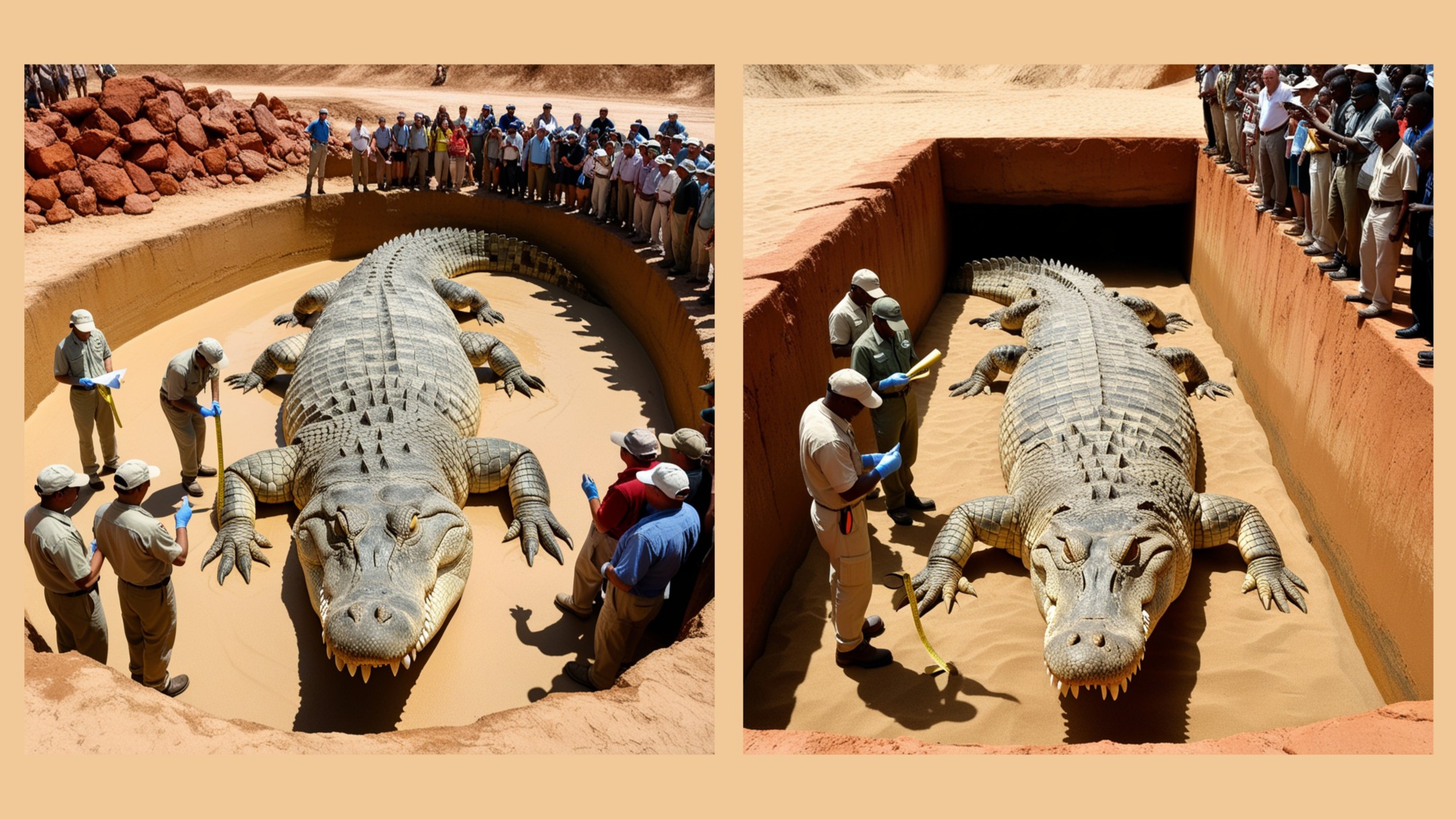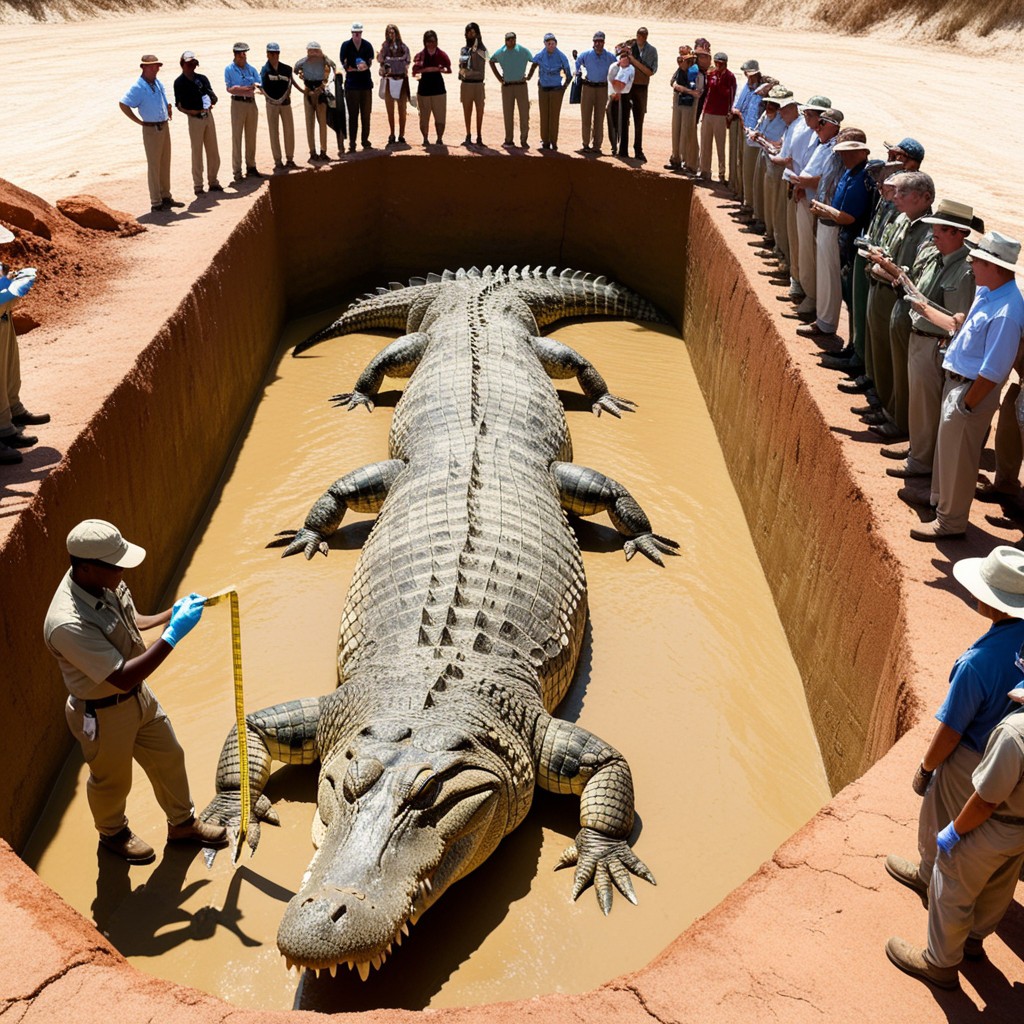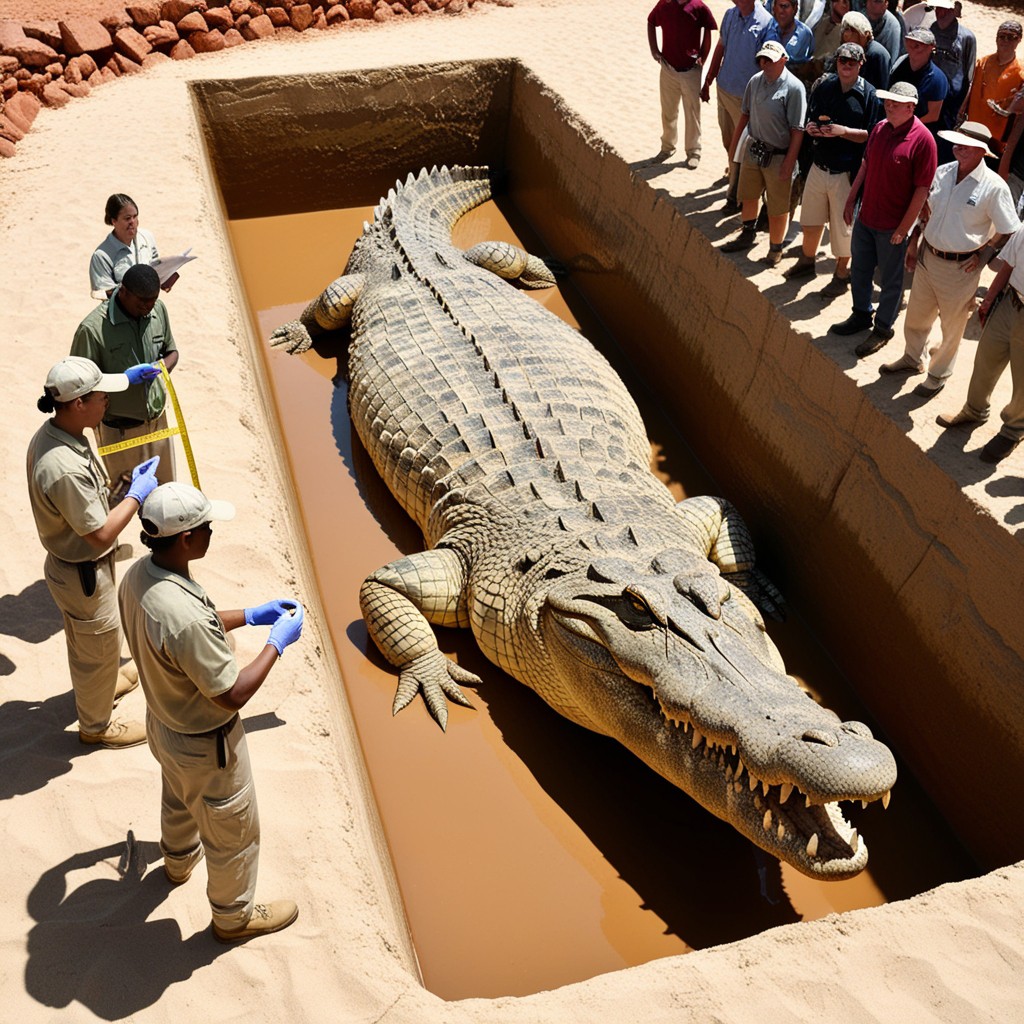
Rediscovering History: Ancient Tomb Reveals Mummified Crocodiles in Astonishing Archaeological Discovery
 In a groundbreaking archaeological discovery, researchers have unearthed a tomb containing mummified crocodiles, shedding light on the ancient practices and reverence for these majestic creatures. This rare and fascinating find offers a glimpse into the rituals and beliefs of a bygone era, emphasizing the deep connection between humans and nature in antiquity.
In a groundbreaking archaeological discovery, researchers have unearthed a tomb containing mummified crocodiles, shedding light on the ancient practices and reverence for these majestic creatures. This rare and fascinating find offers a glimpse into the rituals and beliefs of a bygone era, emphasizing the deep connection between humans and nature in antiquity.

The Remarkable Discovery
The excavation site, located in a desert region believed to be a center of ancient civilization, revealed a large pit housing several preserved crocodiles. These reptiles, meticulously mummified, were likely part of a ceremonial practice dedicated to Sobek, the ancient Egyptian deity associated with the Nile, fertility, and protection.

Experts believe the tomb dates back thousands of years, aligning with the period when crocodiles were venerated as symbols of power and guardians of waterways. The state of preservation is astonishing, with some crocodiles still bearing traces of intricate wrappings and resin coatings used in the mummification process.
- Cultural and Historical Significance
Crocodiles held a special place in the culture of ancient Egypt and other civilizations. They were both feared and revered, symbolizing the balance of life and death. The discovery of their mummified remains not only highlights the spiritual significance of these creatures but also provides valuable insights into ancient burial practices.
Archaeologists have speculated that the crocodiles were likely offerings to Sobek, made by communities seeking protection, prosperity, or a bountiful harvest. The meticulous care given to their preservation underscores the importance of these rituals in the daily lives of ancient societies.
Insights into Mummification Techniques
The find has also provided new information about the methods used in animal mummification. Preliminary studies indicate that a combination of natural desiccation, resin application, and intricate wrapping techniques was employed to preserve the crocodiles. This discovery offers archaeologists an opportunity to study these methods in greater detail, potentially unlocking new knowledge about ancient craftsmanship and scientific understanding.
Future Exploration
The site is still under careful excavation, and experts anticipate uncovering more artifacts that could further illuminate the relationship between humans and crocodiles in antiquity. Plans are already underway to exhibit some of the findings in museums, allowing the public to appreciate the craftsmanship and cultural depth of ancient civilizations.
This extraordinary discovery serves as a reminder of humanity's enduring fascination with the natural world and its profound influence on cultural practices throughout history. As researchers continue to explore the tomb, the mummified crocodiles stand as a testament to the ingenuity, beliefs, and creativity of our ancestors.
Copyright © 2025 Amazing Stories. All rights reserved.